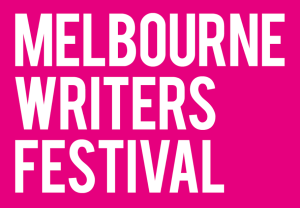 It seems like the most sensible thing in the world; if you want to know what audiences want, then give them a voice. That’s exactly what the Melbourne Writers Festival is doing with a series of tools for audience engagement, ranging from arms-length suggestions via a new digital submission box, to the highly interactive Audience Advocate Committee, meeting once a month to discuss possible programming opportunities. What’s so surprising about the whole thing is just how unusual it is for a festival to invite audiences in for such active engagement.
It seems like the most sensible thing in the world; if you want to know what audiences want, then give them a voice. That’s exactly what the Melbourne Writers Festival is doing with a series of tools for audience engagement, ranging from arms-length suggestions via a new digital submission box, to the highly interactive Audience Advocate Committee, meeting once a month to discuss possible programming opportunities. What’s so surprising about the whole thing is just how unusual it is for a festival to invite audiences in for such active engagement.
You can typically expect festival outreach to involve a) marketing to sell tickets and b) a post-festival survey. It’s often little more than ticking a box. You’ll be bombarded with “Book now! Don’t miss out!” then the opportunity to win sponsor-provided merchandise in exchange for your feedback. It can feel terribly close to being in a Hamster Wheel of Going Nowhere. Year after year the festival requests feedback, and year after year the festival remains the same. But rest assured that any positive feedback provided can be used for a grant acquittal, and postcodes from your ticketing data used to profile the socio-economic positioning of buyers for potential advertisers.
The truth is festivals don’t really engage in audience dialogue, but the irony is that they’d all probably like to. Most festivals are, unfortunately, limited by their status as not-for-profit organisations that project themselves much larger than they actually are, and audience engagement can be a time-consuming activity. And incredibly difficult. Where do you start? Does the festival define itself then seek an audience that connects with their goals, or do the audiences define their expectations and the festival shapes around it? What happens when the identity of the festival clashes with the expectations of the audience?
The Melbourne Writers Festival is an interesting case where there is a confusion of identity tied to its very name. It’s a self-proclaimed Writers festival, with all the baggage associated with positioning itself, perhaps unconsciously, with the publishing side of the game (note: Writers Festival seem to be a particularly Australian title, with Book Festival, for example, favoured in the US). So who is the festival for? Is it a vehicle for established writers to promote their upcoming titles and discuss ideas? It is a place for emerging writers to refine their craft? Or it is for readers to connect both with stories and the creators of stories? While all of these people have a place in the festival, that doesn’t mean a hierarchy hasn’t been established. The reality is that festival staff spend more time communicating with publishers and presenting writers than they do with anyone else, so an unconsciously biased view of the festival’s purpose from within is not surprising.
So to even the playing field, the Melbourne Writers Festival is reaching out to audiences. It’s the first year for the new engagement strategy, and the first steps are small but encouraging. Change is unlikely to happen quickly, but if the festival can maintain momentum we could see some substantial changes towards audience engagement in years to come. Unfortunately, it’s much too early to tell whether or not this will be established as a long-term strategy within the festival, or whether it will fizzle when the festival changes leadership.
Directorships over the last decade at the Melbourne Writers Festival have spanned between 3-4 years, and when a new leader comes on board, they usually do so with new ideas. This may set an expiry date on any initiatives established by the old guard, including an audience-centric vision. A similar shift occurred in-between directors at the Melbourne International Film Festival a few years back. Under Richard Moore, the festival positioned itself, at least from a marketing point of view, with audiences as the core. The iconic “Everyone’s a Critic” campaign replaced David and Margaret with everyday viewers who faced each other to debate the merits of the latest film. By contrast, the current slogan under Michelle Carey, “Only the Best Films Make the Cut”, places absolute authority with the festival itself, and the audience becomes passive, almost irrelevant. It’s hard to imagine that these marketing statements aren’t subtle reflections of shifting culture within the festival team.
Of course, each festival is it’s own creature, and only time will tell how this will all pan out for the Melbourne Writers Festival. There is certainly room for the festival to grow, with roughly 33% of Victorians attending a library in 2012 but only a tiny fraction of this number attending the Melbourne Writers Festival. To put this in perspective, library attendance makes up a third of all people who live in Victoria. According to Arts and Culture in Victoria: A Statistical Overview 2012, attendance at libraries as a cultural activity was only outdone by cinema attendance (69%). Sure, borrowing from a library and attending a festival isn’t the same thing, but by first engaging with existing book-reading audiences you can hopefully open the door to other potential audiences, and then it may well be a whole new ballgame.
The Melbourne Writers Festival starts today and runs until 30 August.

